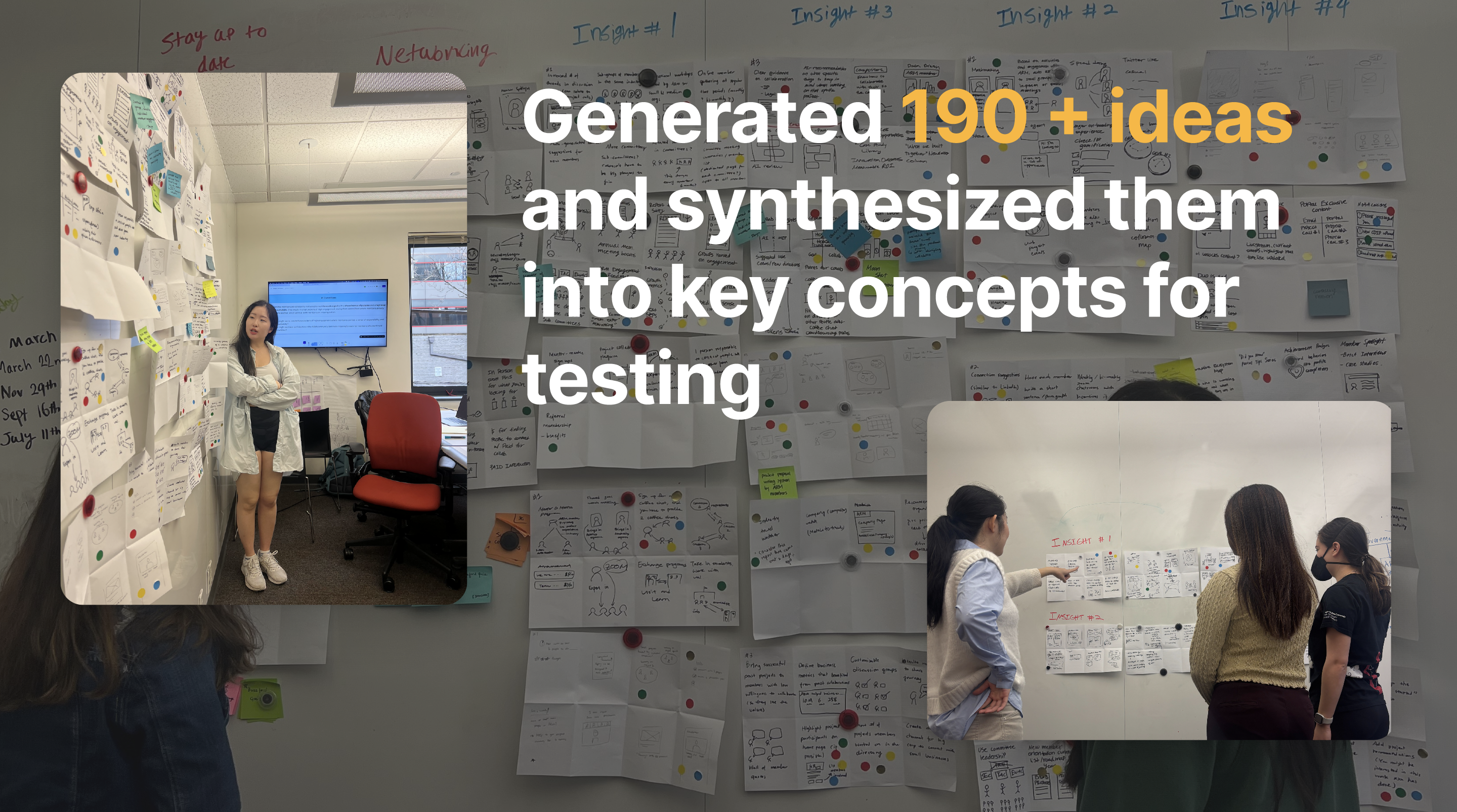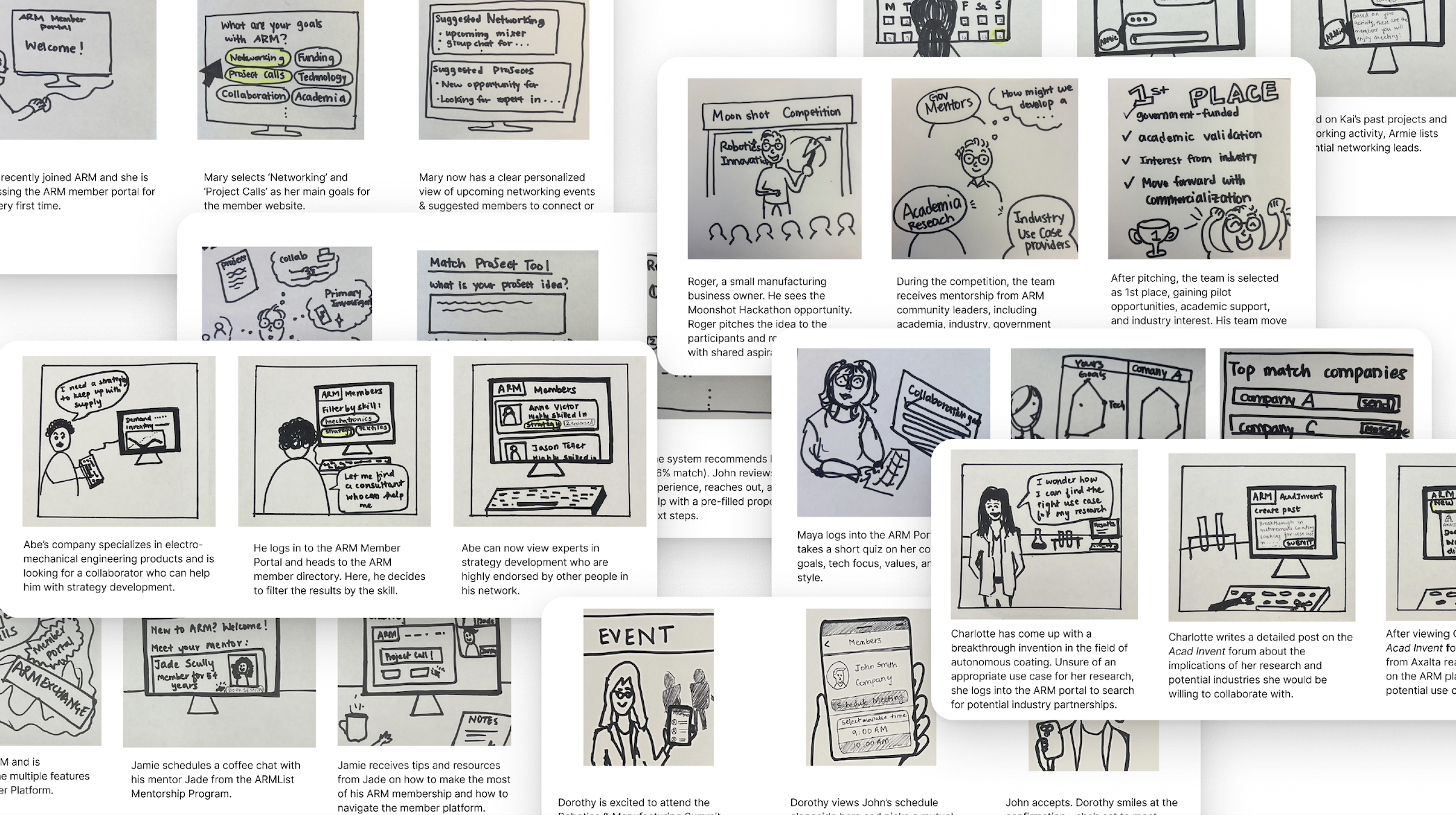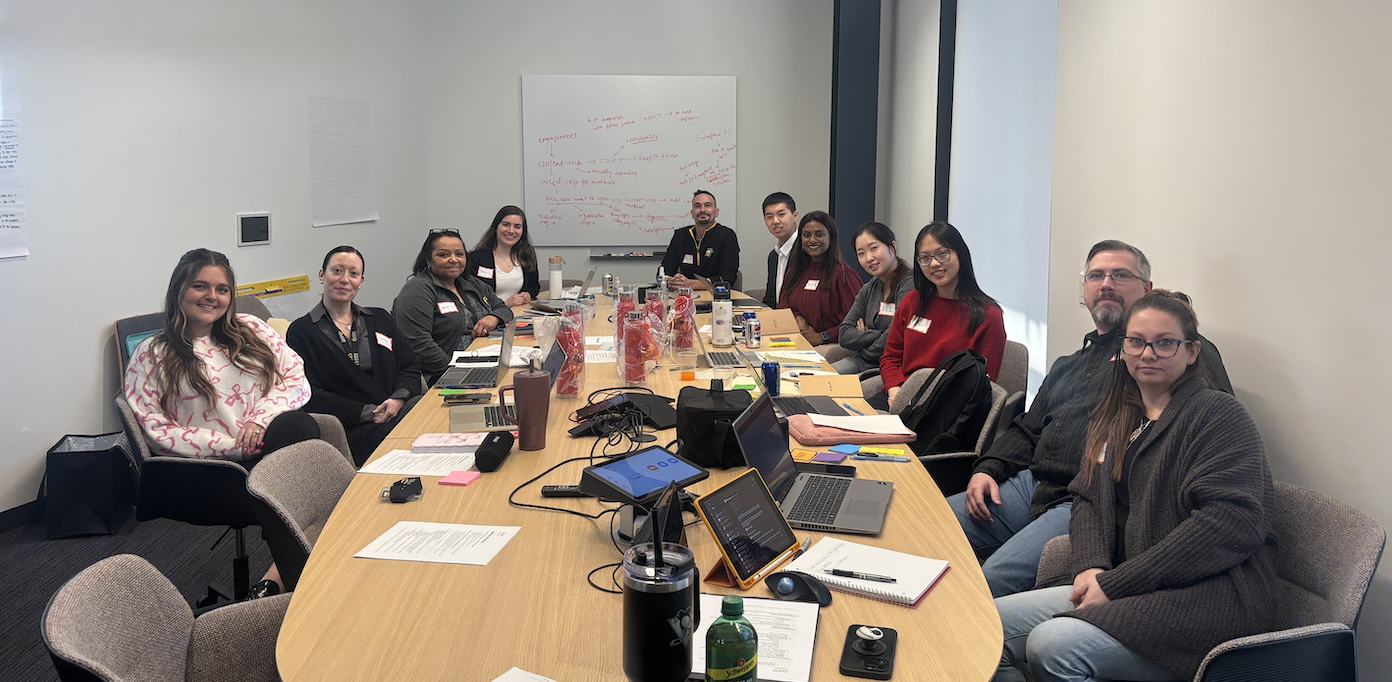INNOVATE.X
Innovate.X is an AI-powered match-making platform for the Advanced Robotics for Manufacturing Institute (ARM) members. As ARM manage more than 450+ organizations in industry, academia, and government, they needed a way to increase collaboration among members.
Salesforce, Confluence, Google Analytics, Notion, Meetgeek AI, Dovetail AI, Mobbin, Screen Studio, Figma, OpenAI, ClaudeAI, Lovable, Microsoft Excel, CursorAI, Google Gemini, Github, Slack
[Client Stakeholder.]
The Advanced Robotics for Manufacturing (ARM) Institute brings together industry, academia, and government to strengthen U.S. manufacturing. By lowering barriers for small and medium-sized manufacturers, ARM provides access to emerging technologies and collaborations with established manufacturing companies.

Our project began with an ambiguous task to simply "improve collaboration among ARM Institute members". To better understand the manufacturing industry and the organization itself, we conducted white paper research, SME Interviews, and PESTLE Analysis.
[CHALLENGE.]
Collaboration in ARM relies too heavily on pre-existing networks. This favors established players while creating barriers for startups and smaller organizations.
This limits inclusivity, slowing innovation, and ultimately weakening the impact of ARM’s mission on U.S. manufacturing competitiveness. We found that finding the right collaborators is inherently difficult, leading members to rely heavily on in-person meetings and mutual introductions.
[How Might We.]
How Might We Enable Smarter, More Inclusive Collaboration Across the ARM Institute to Unlock Innovation at Scale in U.S. Manufacturing?
Once we gained a clear understanding of the key problems and unmet needs within the network, using the Crazy 8s method, we rapidly generated a wide range of ideas.

Building on those key concepts, we created 9 storyboards to explore user journeys and tested them with ARM members to evaluate how well each concept aligned with their needs. During testing, participants engaged in think-aloud protocols and provided ratings across multiple criteria using a structured evaluation scale.

[Key Insights.]
- Smaller member organizations want their contributions to be visible and respected, rather than overshadowed by larger partners.
- The current system lacks guidance for finding partners with aligned expertise, skills, interests, or past project experiences.
- Smaller organizations face reduced visibility, particularly because they are not eligible to lead project calls.
This limits inclusivity, slowing innovation, and ultimately weakening the impact of ARM’s mission on U.S. manufacturing competitiveness. We found that finding the right collaborators is inherently difficult, leading members to rely heavily on in-person meetings and mutual introductions.
[Stakeholder Management.]

Managed cross-sector stakeholders by aligning weekly team priorities, delivering insight briefings, and partnering with C-level leadership to shape engagement strategy and product direction.